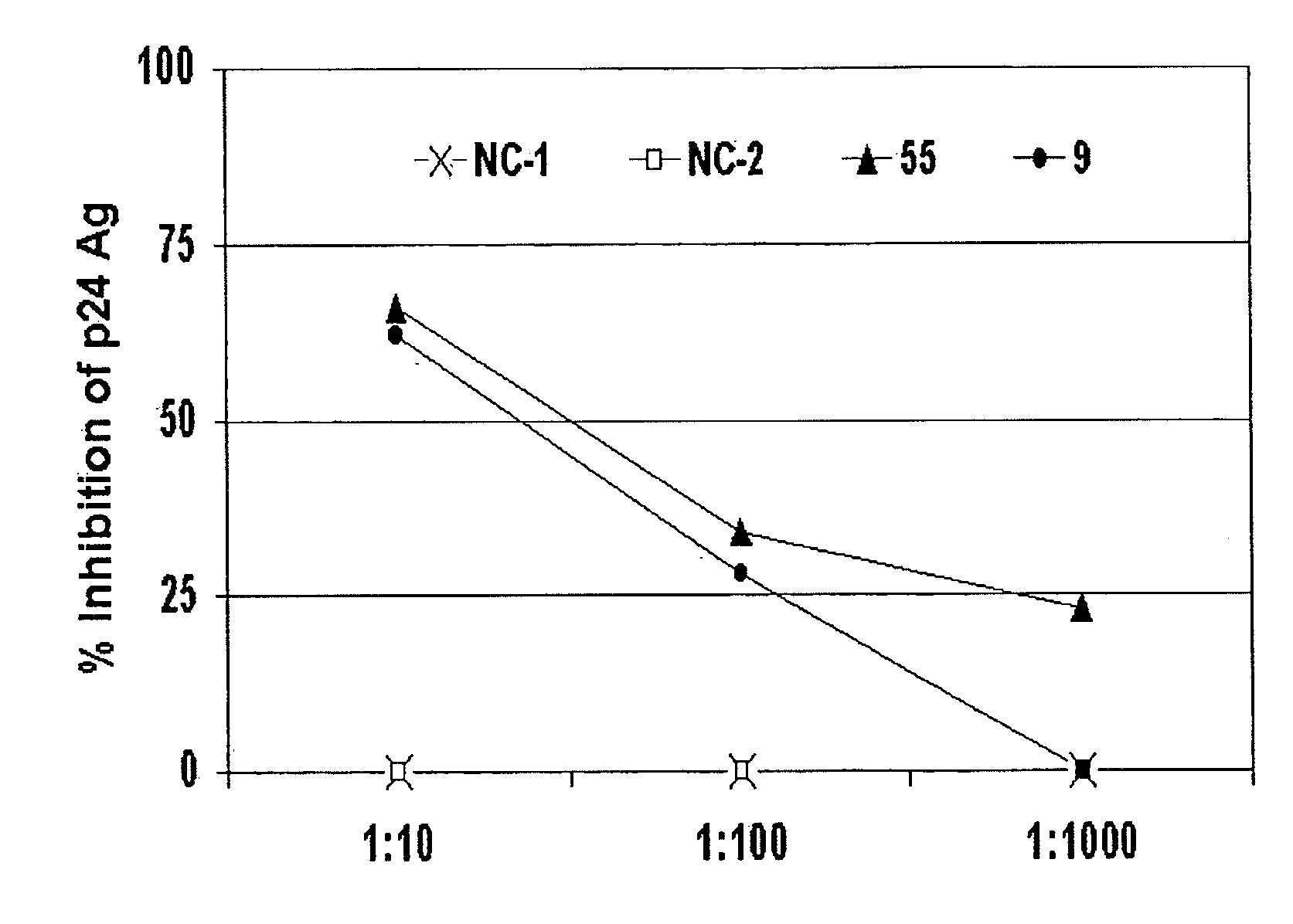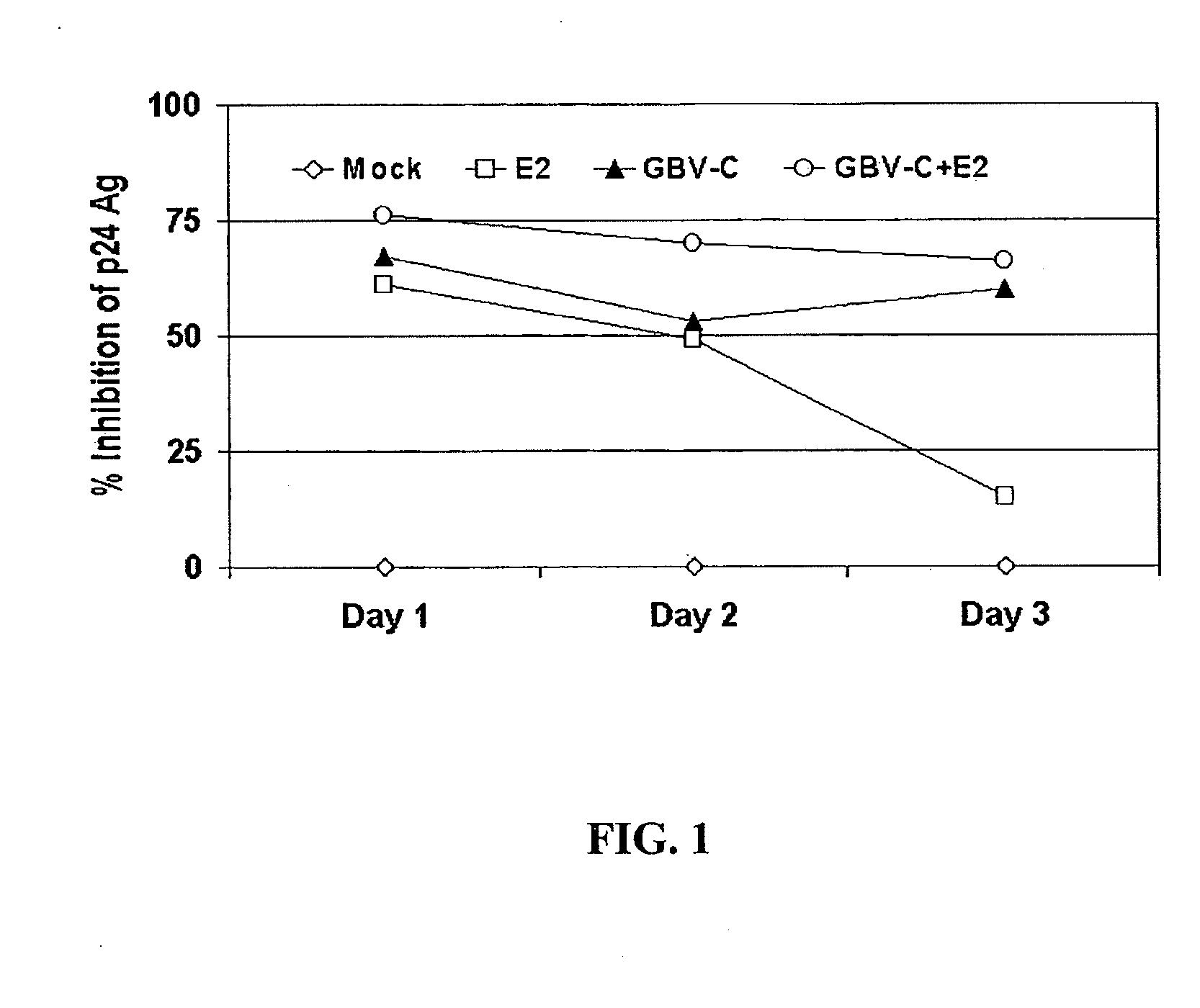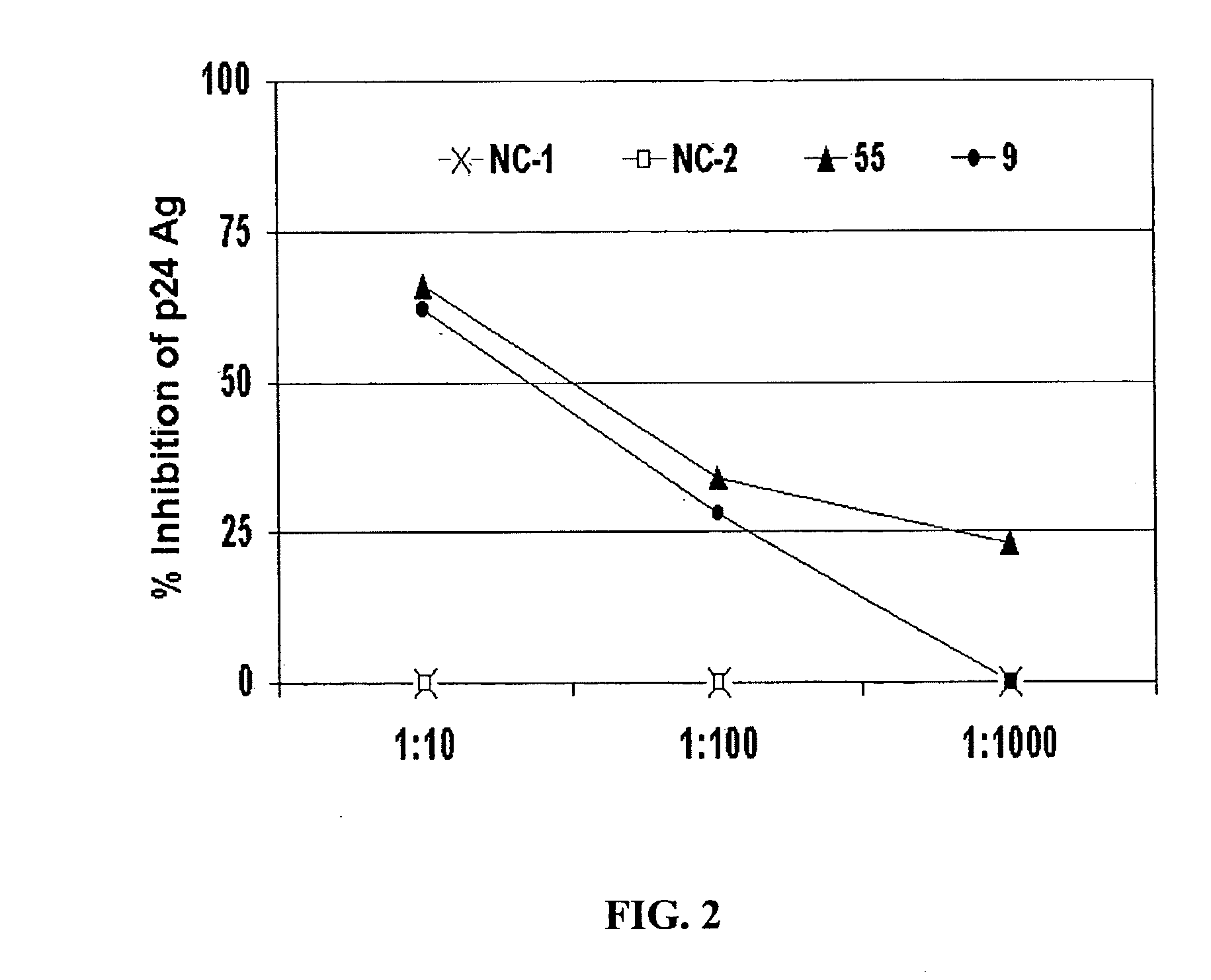Gb virus c (hepatitis g virus) for the treatment of HIV
a technology of hepatitis g virus and gb virus, which is applied in the field of molecular biology and virology, can solve the problems of unfavorable diagnosis, no effective cure reported, and individual's immune system no longer equipped to fight, and achieve the effect of reducing or delaying mortality in infected persons
- Summary
- Abstract
- Description
- Claims
- Application Information
AI Technical Summary
Benefits of technology
Problems solved by technology
Method used
Image
Examples
example 1
HIV Neutralization Assay
[0252]E2 antibody serum was studied for interactions with HIV in a virus neutralization assay. In one study (FIG. 1), a clinical R5 strain of HIV was incubated with a GBV-C RNA negative-E2 antibody negative serum (mock), with GBV-C E2 antibody positive-RNA negative serum (E2), GBV-C RNA positive-E2 negative serum (GBV-C), or a mixture of E2 and GBV-C sera for 1 hour at 37° C. prior to adding the mixture to PHA-IL-2 stimulated peripheral blood mononuclear cells (PBMCs). After infection, cells were washed, and media was collected daily for 3 days for testing for HIV p24 antigen (p24 Ag) in culture supernatant by ELISA. HIV p24 Ag was measured, and the percent inhibition determined by dividing the concentration present in the test sample by the HIV-mock infected control sample. The baseline HIV p24 Ag was determined using the “mock”—HIV mixture, and significant inhibition of HIV replication (as measured by p24 Ag production into culture supernatant fluids) was o...
example 2
HIV Neutralization Assay with Purified Antibody
[0254]To determine if the inhibitory substance in the GBV-C E2 antibody-positive sera was antibody, IgG from four E2 antibody-positive sera and two E2 antibody-negative sera were purified by protein G column chromatography. HIV was mixed with a “no antibody” control (No Ab), or with 5 μg / ml of an E2 antibody negative control (NC-2) or E2 positive controls. The mixtures were applied to PBMCs, and after washing the HIV inocula, the cognate IgGs were maintained in the culture media. The raw p24 Ag results are shown in FIG. 3, and the percent HIV p24 Ag inhibition is shown in FIG. 4.
example 3
HIV Neutralization Assay on HIV Strain X4
[0255]Studies were performed to determine if E2 antibody-positive serum inhibited X4 strains of HIV. Using the same experimental design as used for FIGS. 3 and 4, IgG preparations from E2-negative and -positive IgG preparations were studied for their ability to inhibit a clinical X4 HIV strain in PHA-IL-2 PBMC cultures. Similar to the R5 strain, the X4 strain was inhibited by GBV-C E2-positive IgG, but not GBV-C E2-negative IgG (FIG. 5).
[0256]Since R5 viruses utilize CCR5 as their co-receptor, and X4 viruses utilize CXCR4 as their co-receptor, GBV-C E2 antibody inhibition indicates that they are cross-reacting with a conserved epitope on HIV that inhibits HIV replication, and that this epitope is on both co-receptor usage types of HIV. Since the epidemiological data indicates that E2 antibody is associated with prolonged survival in Germany, France, and the United States, this interaction has promise for HIV strains widely distributed worldwi...
PUM
| Property | Measurement | Unit |
|---|---|---|
| delay time | aaaaa | aaaaa |
| delay time | aaaaa | aaaaa |
| delay time | aaaaa | aaaaa |
Abstract
Description
Claims
Application Information
 Login to View More
Login to View More - R&D
- Intellectual Property
- Life Sciences
- Materials
- Tech Scout
- Unparalleled Data Quality
- Higher Quality Content
- 60% Fewer Hallucinations
Browse by: Latest US Patents, China's latest patents, Technical Efficacy Thesaurus, Application Domain, Technology Topic, Popular Technical Reports.
© 2025 PatSnap. All rights reserved.Legal|Privacy policy|Modern Slavery Act Transparency Statement|Sitemap|About US| Contact US: help@patsnap.com



